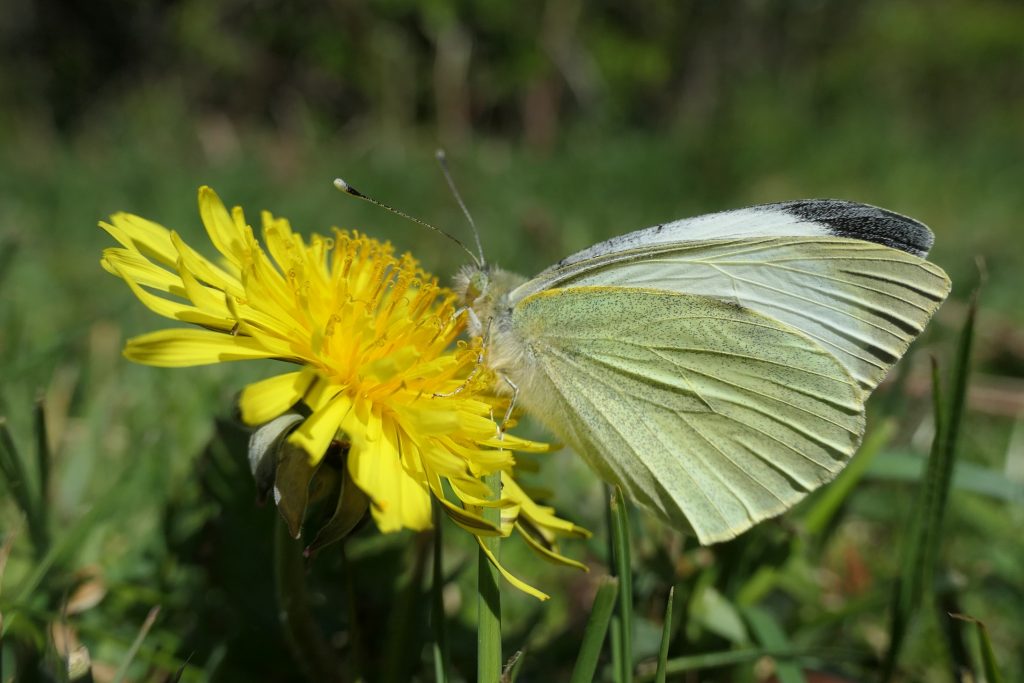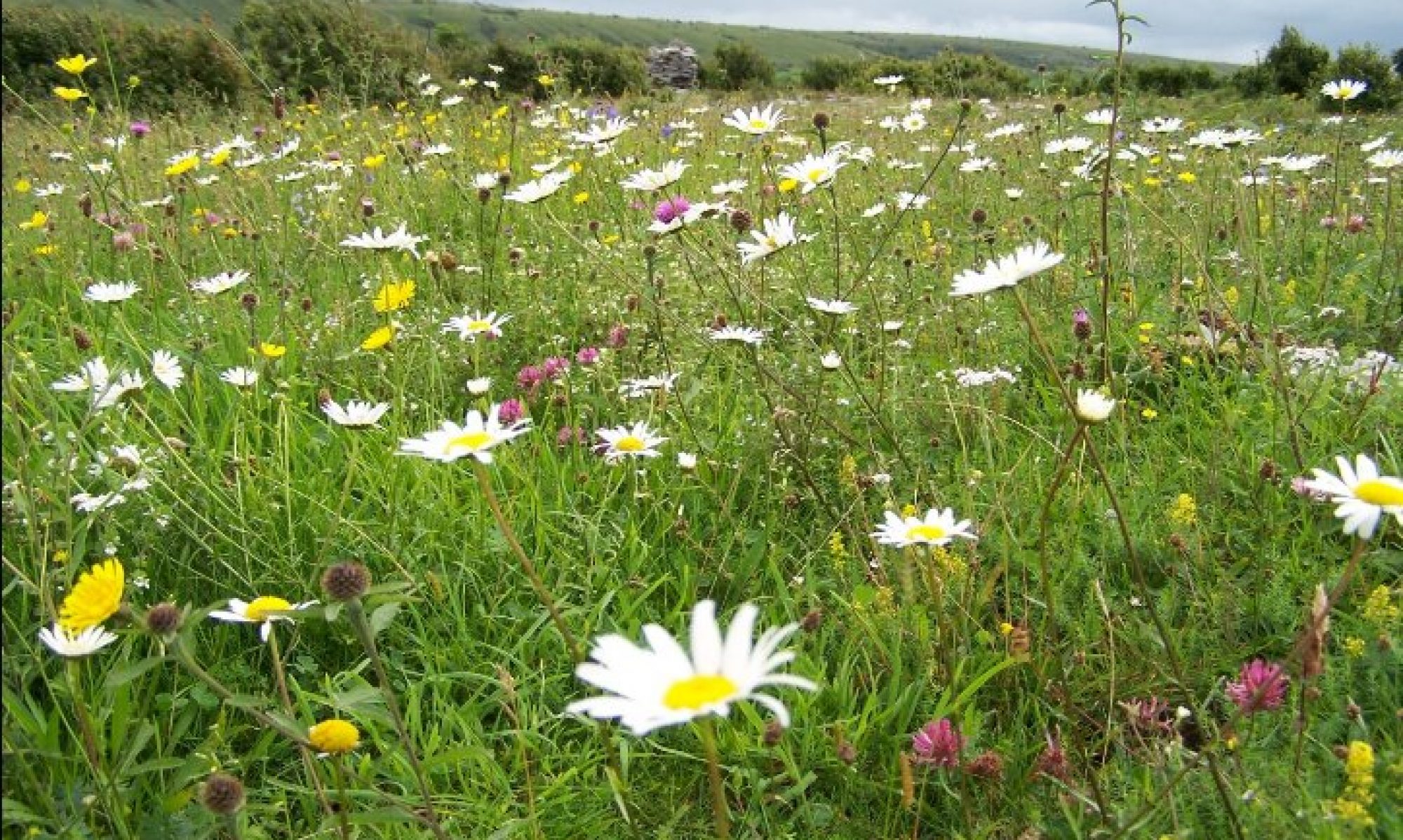March and April 2025 have brought high sunshine levels, dry weather and above-average temperatures. Not since the lockdown spring of 2020 have similar conditions occurred, and our butterflies certainly need the advantage that extreme warmth brings in spring.
The abundance analysis from 2024 has just been completed by National Biodiversity Centre’s Michelle Judge, and the data from the scheme confirms what we all felt, 2024 was a very poor year for butterflies because of the cool and overcast summer.
The key finding from the analysis is that 2024 was a bad year for butterflies, and the trend from 2008 – 20024 now shows a Strong Decline (-56.98%). Bear in mind that this figure applies to our 15 commonest butterflies only. The 10-year trend to 2024 is showing a moderate decline (-21.84% ).
While our butterflies are suffering from more than poor weather, sunny, warm weather has been demonstrated to benefit butterflies outside the November 1 to February 28 period.
Numbers of many species will be low in 2025, especially single-brooded butterflies that have suffered from the bad weather since July 2023. However, prolonged warmth will help multi-brooded species to build populations during the coming months.
Spring has long been celebrated as a time of happiness and renewal. In Home Thought from Abroad Robert Browning wrote
O, TO be in England
Now that April’s there,
And whoever wakes in England
Sees, some morning, unaware,
That the lowest boughs and the brushwood sheaf
Round the elm-tree bole are in tiny leaf,
While the chaffinch sings on the orchard bough
In England—now!
Browning mentions England rather than Ireland our experience of spring is similarly uplifting. Birdsong and unfurling leaves add the soundtrack and visual accompaniment to the season of rebirth and renewal. Flowers open their bright colours to tempt pollinators to visit. Pollinators are roused by the warmth to seek food and mates. In spring, the first butterflies to emerge are typically those that overwintered as adults, followed by butterflies tucked up in pupae. The glowing colours of butterflies did not find room in Browning’s verse, but they certainly belong there. The elation of seeing that first Orange-tip, the male’s deep, hot orange forewing tips alongside starched white elsewhere announces spring nationwide like no other butterfly.
Our experience of nature is enhanced by direct, in-the-field contact. The gallery that follows reflects that experience. Go out and enjoy spring!
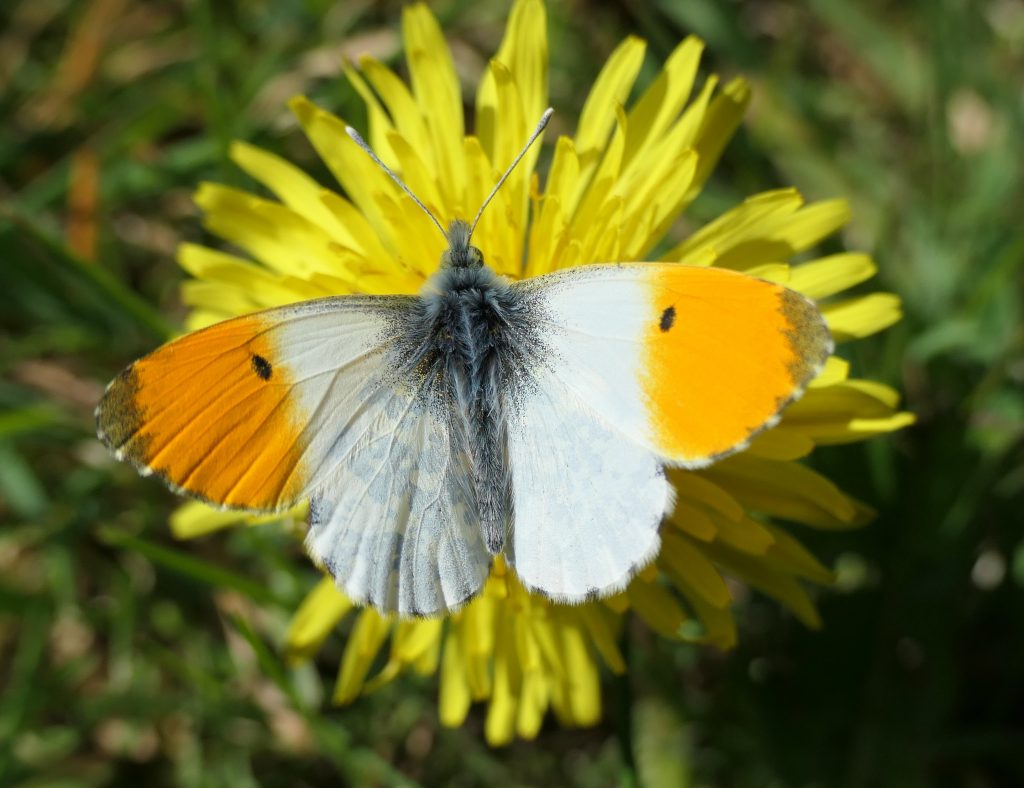
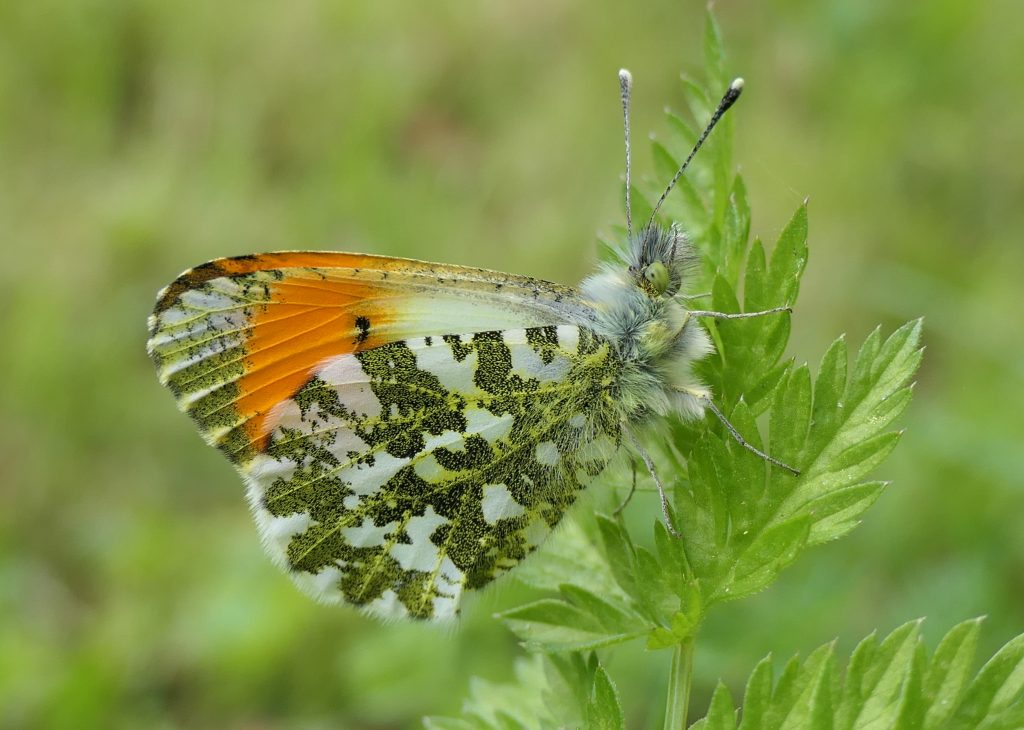

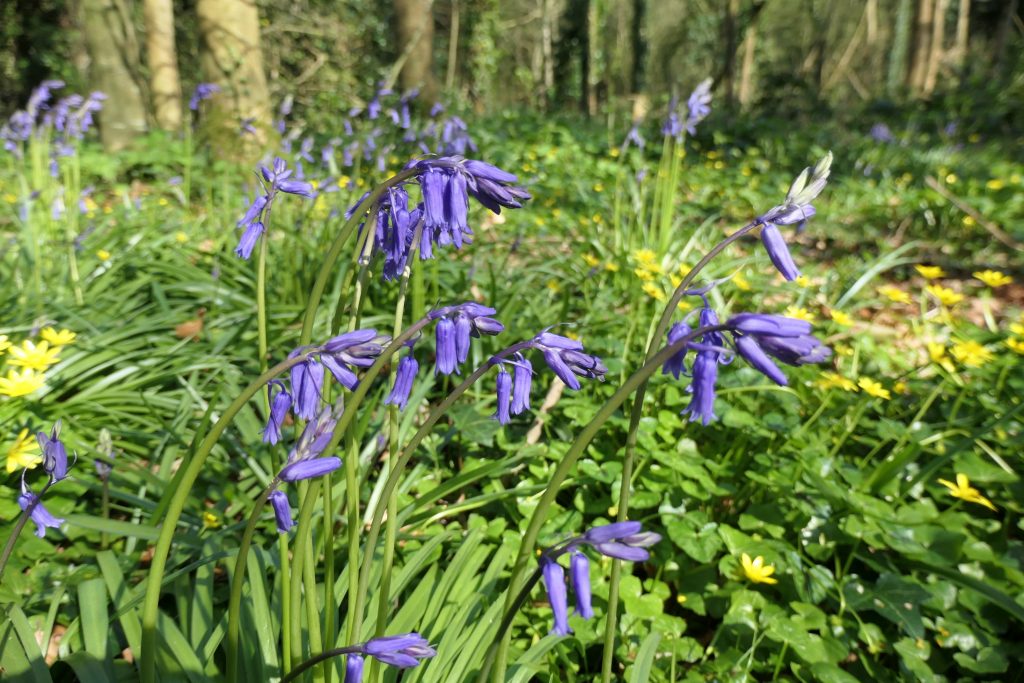
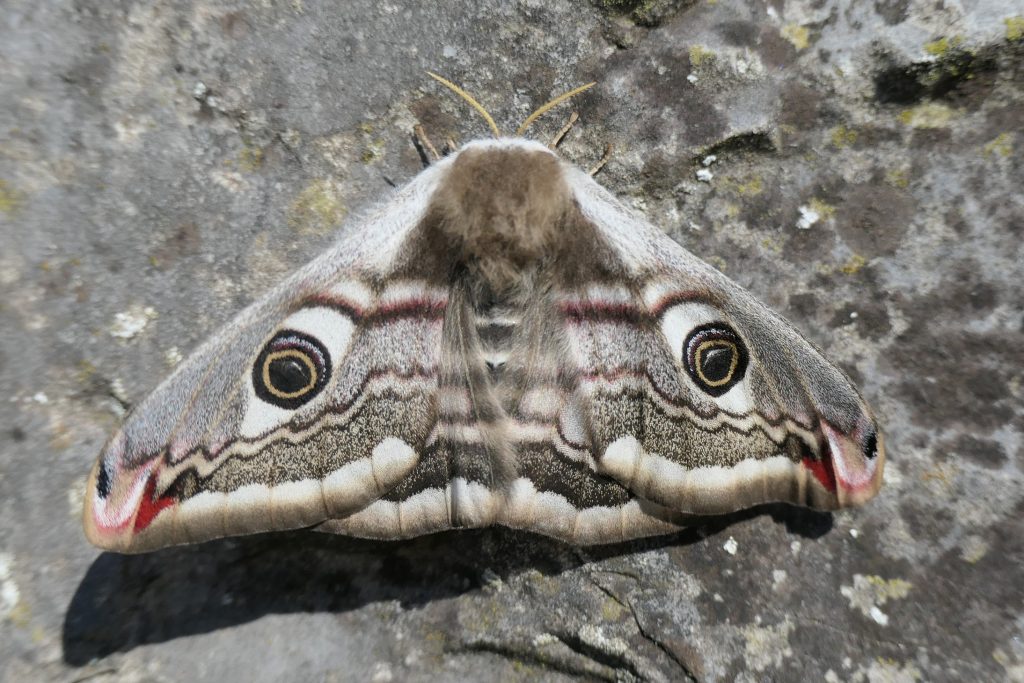
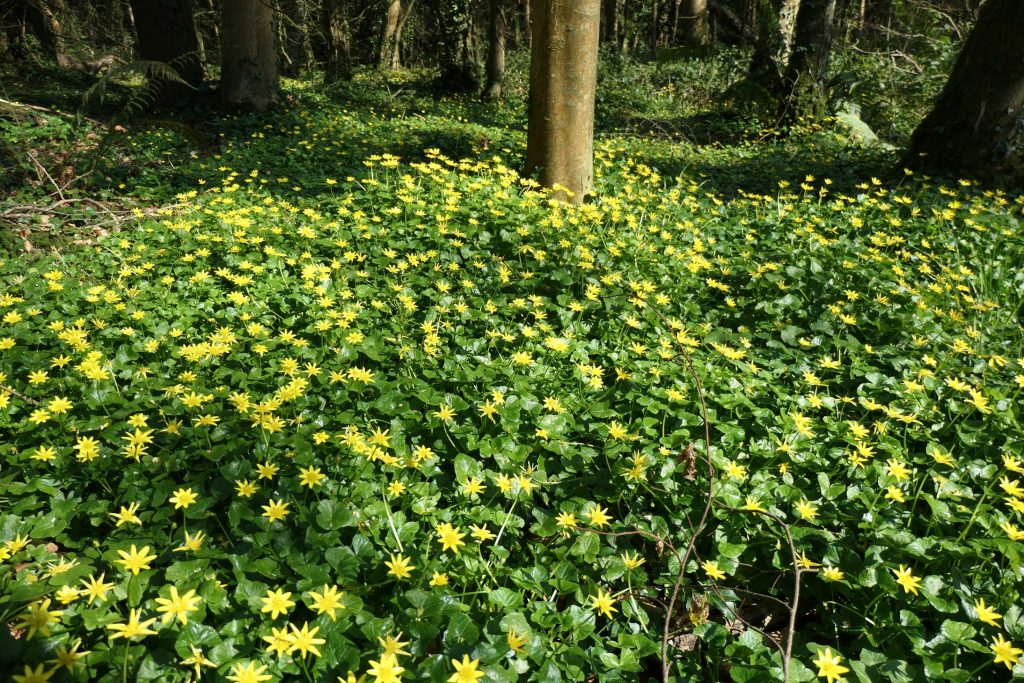
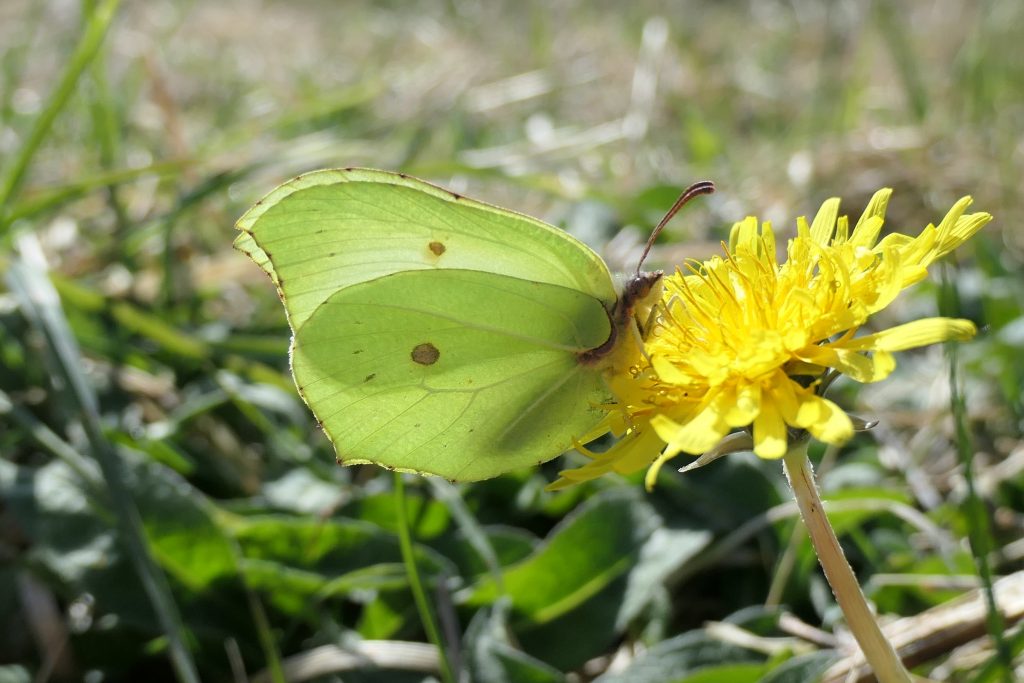
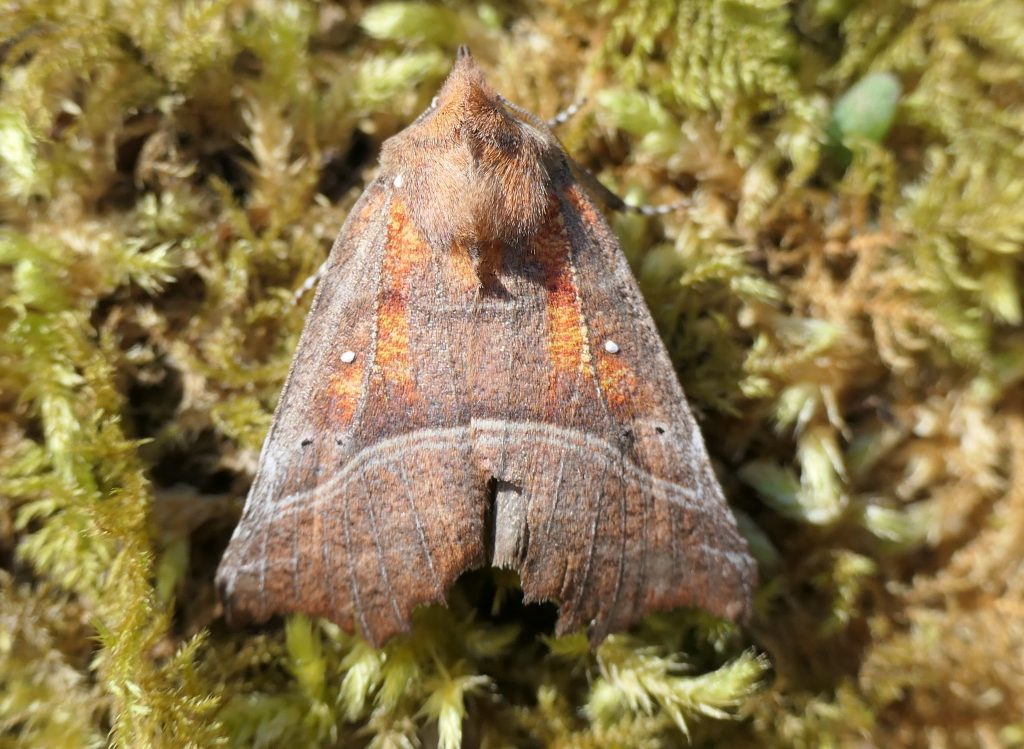
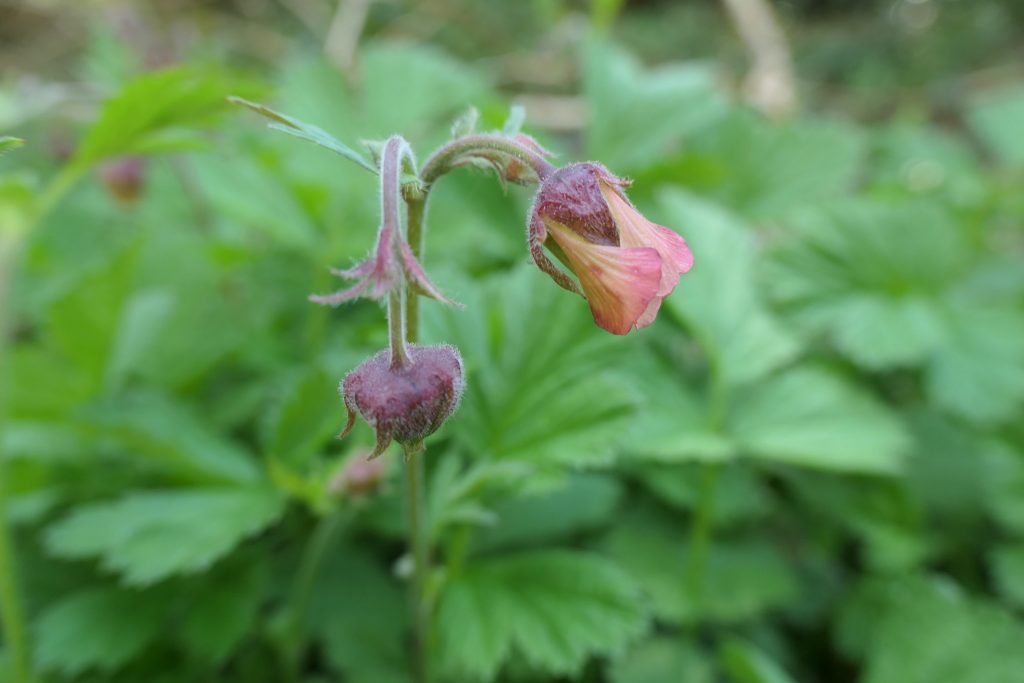
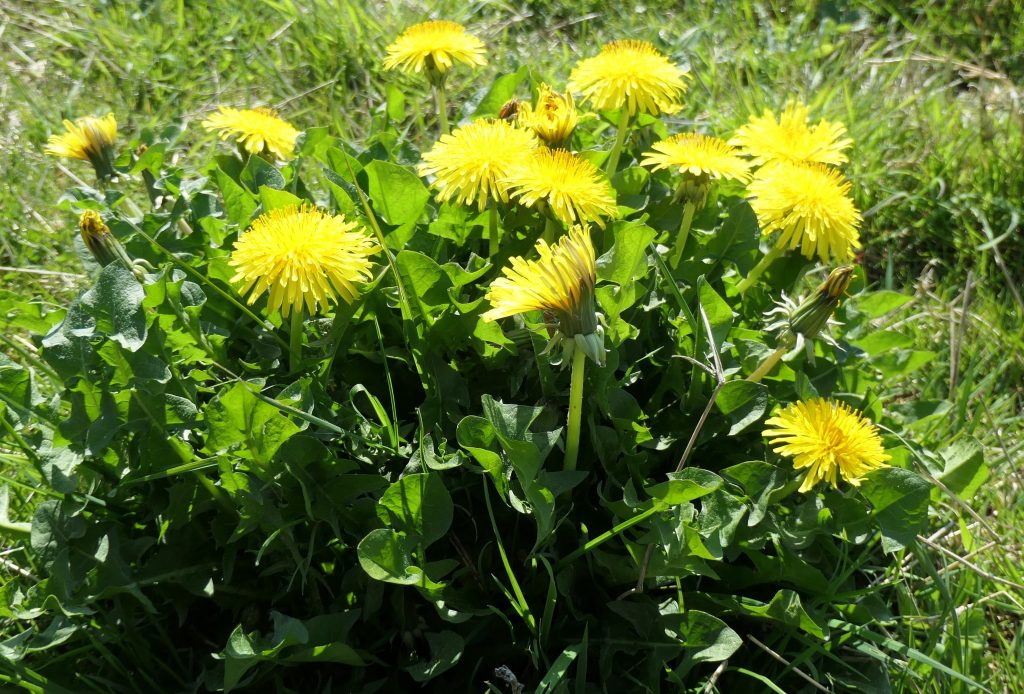
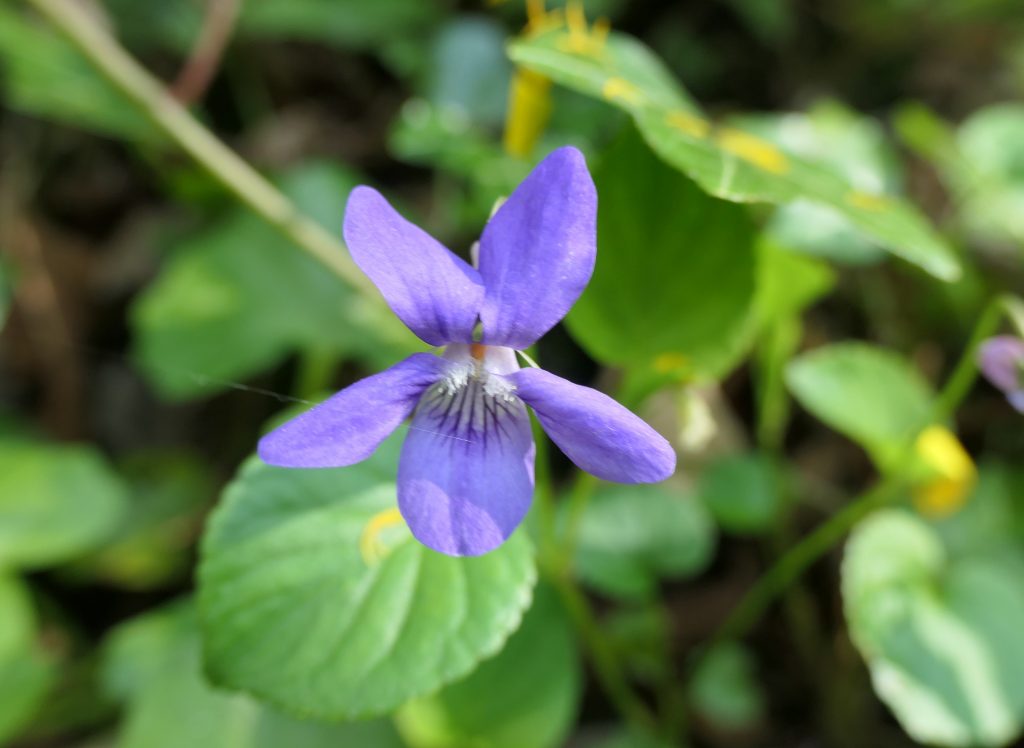
A violet by a mossy stone
Half-hidden from the Eye!
—Fair, as a star when only one
Is shining in the sky. The Common Dog-violet is the foodplant of the Silver-washed Fritillary caterpillar, which is busy feeding on the more delicate leaves of this plant in light-filled woods throughout Ireland.
